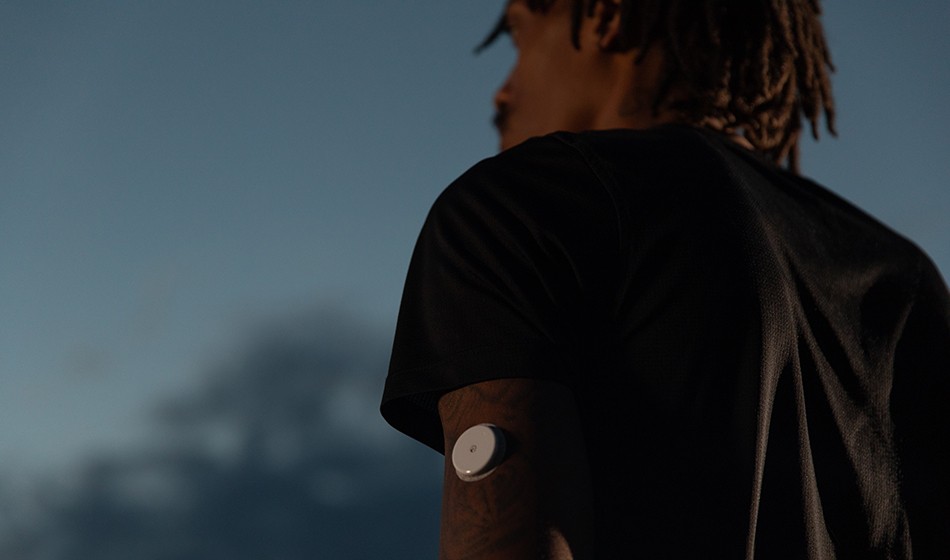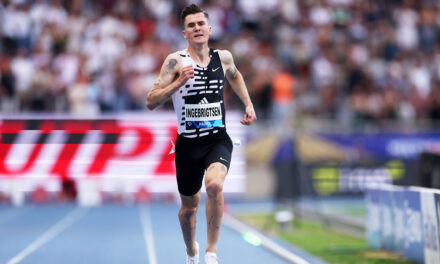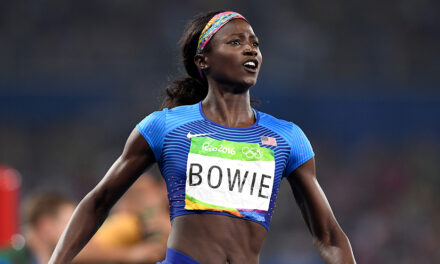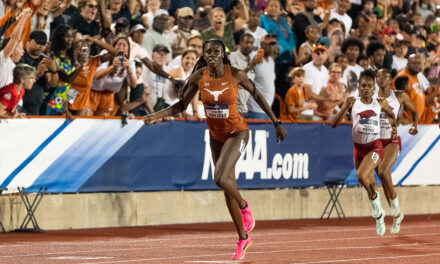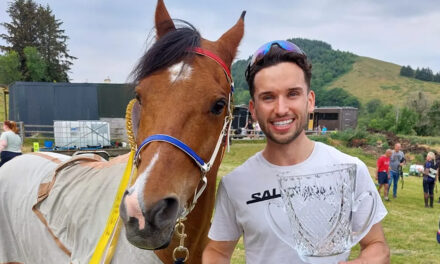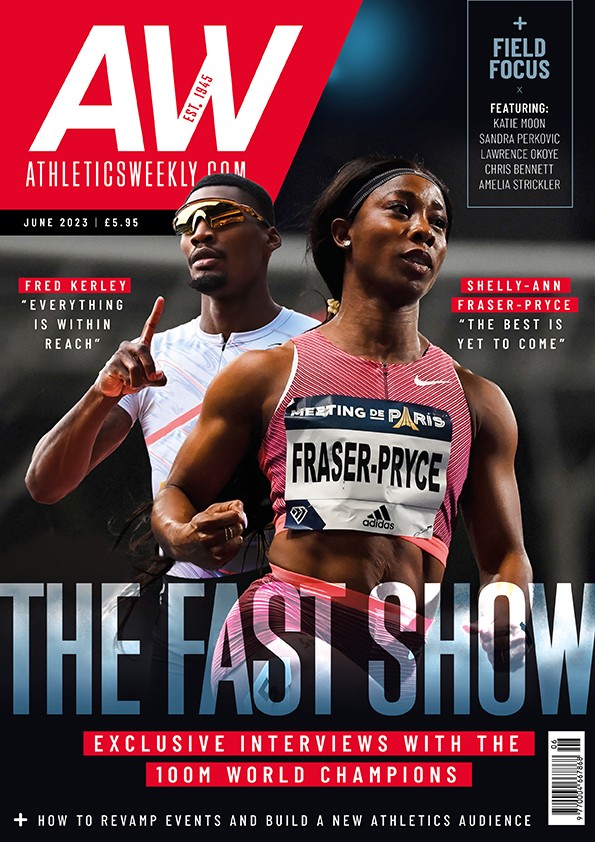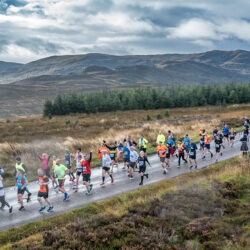Sifan Hassan, Eilish McColgan and Eliud Kipchoge are among a new wave of athletes who are measuring their sugar levels with biosensors in a bid to run faster
When Sifan Hassan crossed the finish line of the TCS London Marathon in April, she was wearing the Nike super-shoe prototypes on her feet, a pair of green shorts and a singlet on her body and a huge smile on her face. Barely noticeable on the back of her left arm was a small, white biosensor, too.
This device was a continuous glucose monitor (CGM), made by Abbott, and which works alongside an app created by a company called Supersapiens. Currently all the rage in endurance sport circles, it is effectively the world’s first human fuel gauge.
In recent years athletes have been able to measure, among other things, their heart rate, body weight, sleep patterns, stride length and cadence. Yet now, thanks to this collaboration between Supersapiens and the Abbott Libre Sense Glucose Sport Biosensor, you can add blood sugar fluctuations to the list.
Traditionally used by diabetics, athletes like Hassan are wearing a CGM to help with pre and mid-race fuelling. The Dutch athlete is not paid to wear it, but her team has clearly seen the benefits. Runners like Eilish McColgan and Eliud Kipchoge, meanwhile, have formal links with Abbott and, consequently, have discussed their sugar stats with Supersapiens.

Sifan Hassan (Getty)
Outside athletics, cycling teams such as INEOS Grenadiers use it and it is particularly popular in triathlon, where Kristian Blummenfelt and Gustav Iden have used it on their way to winning Olympic and Hawaii Ironman titles. There are even reports of world-class athletes in non-endurance events such as pole vault using it as well.
By giving the user real-time visibility into their blood glucose levels it allows them to fine-tune fuelling strategies for training, racing and recovery. In marathons and ultra-endurance races it helps you avoid the dreaded “bonk”. Outside of sport, it can also prove useful when making improvements to your diet and lifestyle generally, although the Supersapiens app is not designed for people with diabetes.
The stats offer an insight into blood glucose levels, which in turn provides clues as to what the athlete should be eating and when. In short, it is taking the guesswork out of fuelling.
How it works
A circular adhesive patch sits on your arm with a small filament embedded just under your skin. This biowearable is pressed into your body, where it sits for 14 days, picking up glucose readings from the interstitial fluid. Once inserted it takes about one hour for readings to start showing and you can link the app with Garmin, Apple Health, Training Peaks, Nolio and Wahoo.
I was given the opportunity to test it out and, for me, the most challenging part of the testing process was inserting the sensor in the first place. A small blue contraption is used to apply it with a “push and click” mechanism, but it contains a slightly scary looking needle. Despite being told that it was almost always a painless experience, I was nervous about applying it. But, as you might guess, I didn’t feel a thing.

It’s more likely you will find the price more painful. A subscription to buy two biosensors costs €150, for example.
Once the sensor is applied the glucose readings soon begin to appear and are nothing short of fascinating as you see your sugar levels rise and fall, sometimes dramatically, following various meals, snacks and drinks.
The readings are calculated minute-to-minute, too, but if you miss any time due to not being close to your phone then you merely scan the sensor and it updates the missing stats via Bluetooth.
For most people, average glucose is naturally regulated between 90-110mg/dL (with fasting values between 70 and 90mg/dL and post-eating values between 110 and 140mg/dL). But one of my first shocks was that a breakfast bowl of granola sent my levels shooting beyond 200mg/dL upper ceiling due to the high level of sugar contained.
I’d previously thought this particular brand of granola was “healthy” but obviously not, although I was later advised that I could potentially control this “glucose rush” by adding protein powder and ingredients like chia seeds to the cereal.

After using the CGM for a few weeks, I had an informative call with David Lipman, the director of applied science and content at Supersapiens, who advised: “Try to minimise variables and optimise one thing at the time. So if you’re trying to solve the granola problem then don’t try to solve that and your long run problem plus another problem.”
It is generally good if your glucose levels are stable through the day, too, and there are plenty of tips that you can use to prevent glucose rushes. Having a drink with some apple cider vinegar before a meal or going for a walk straight after eating can blunt these rushes, for instance.
Making sense of the data
One challenge I faced when wearing the CGM is actually being able to interpret the information on the app but a series of easy-to-read articles in the app or on the Supersapiens website, in addition to automated emails packed with handy tips, helped me navigate through this new world of glucose monitoring.
I also found that, quite simply, wearing the monitor makes you far more aware of what you are eating. For the 14 days of wearing the device there is no doubt my diet improved. I quickly realised that reaching for chocolate or a fizzy drink would cause the glucose levels to rocket, for example, so I found myself “gamifying” the process.
Lipman has been wearing a sensor since January 2021 and he smiled when I mentioned my granola story. “I once made a homemade mushroom risotto from scratch,” he said. “It took me hours, but took my glucose above 200 a long time. I’m still scarred by the memory!”
Like myself, Lipman is a former club level middle-distance runner who moved into marathons for the challenge and clocked 2:45 in Berlin last year before improving to 2:42 in London. “The feedback you gain is where the power lies,” he says of the Supersapiens process.
Interestingly Lipman tells me that probably the first glucose monitoring for long distance running took place at the Boston Marathon in 1923. There was a clear link, too, between the “sugar level” at the end of the race and the “physical condition” of the runners. Those with average sugar levels seemed fairly normal while those with low levels showed signs of unconsciousness, irritability, dizziness and other distressing symptoms.

In the past 20 years, Lipman adds: “The Gatorade Sports Science Institute and [physiologist] Andy Jones really pushed things along. Exercise physiologist Asker Jeukendrup also did some great work which was really foundational and impressive. In the 1990s it [use of CGMs] really took hold in the cycling peloton more than the running world. For cyclists and especially ironman triathletes, nutrition is front of mind for them. It’s so important.”
Another athlete who has utilised Supersapiens is runner-turned-triathlete Emma Pallant-Browne. A former European under-23 cross-country champion, she says: “From experience I have seen how bad things can go when you don’t fuel well. I have had many performances affected by fuelling, so I know how important it is to my health and results.
“While you can know what you’re putting in your body, you can’t know how your body is responding to it or using it. When I first heard about Supersapiens I knew that it could really help my performance by having some real data to work with rather than relying solely on feel.”
An unfair advantage?
Abbott is the sponsor of the World Marathon Majors series and Supersapiens are title sponsor of Ironman, but not everyone approves of the use of CGMs in sport. Some sports scientists have criticised their use and argued over whether it’s good to stress about statistics that are sometimes difficult to decipher. The world governing body for cycling – the UCI – has also banned their in-competition use as they feel it gives riders and their teams an unfair advantage.
There are no signs of it being banned in athletics and, in principle, it seems little different to a humble heart rate monitor or one of the many smart watches that measure innumerable performance-related metrics.
The price will doubtless put many avid athletes off, but if you can stomach the cost and are committed to getting the most out of your potential then I would recommend trying out a CGM for a short spell at least.
The initial insight into what foods cause your glucose levels to rise and fall is worth it. As any committed endurance athlete knows, nailing that elusive PB can be priceless, too.

This feature first appeared in the May issue of AW magazine, which you can buy here

